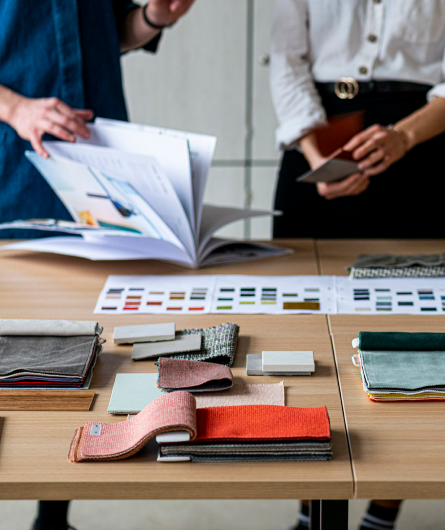
The Benefits of Biophilia in Workplace Design
Biophilic design takes the bond humans have with nature and applies it to the spaces around us to provide respite and joy to man-made spaces. As the workplace has evolved, principles of biophilic design have begun to gain prominence due to benefits in staff well-being, company branding, corporate culture, as well as a popular design aesthetic. A common misconception is that biophilic design translates to adding lots of plant life and shrubbery, however this is only one aspect.
The term “biophilia”, was coined by American biologist and researcher Edward O. Wilson, who describes biophilia as an affiliation or attraction to nature and natural processes. Biophilic design principles have several aspects, but largely consists of bringing nature into the space or creating natural analogs to bring the features of nature into a space, offering multi-sensory interactions.
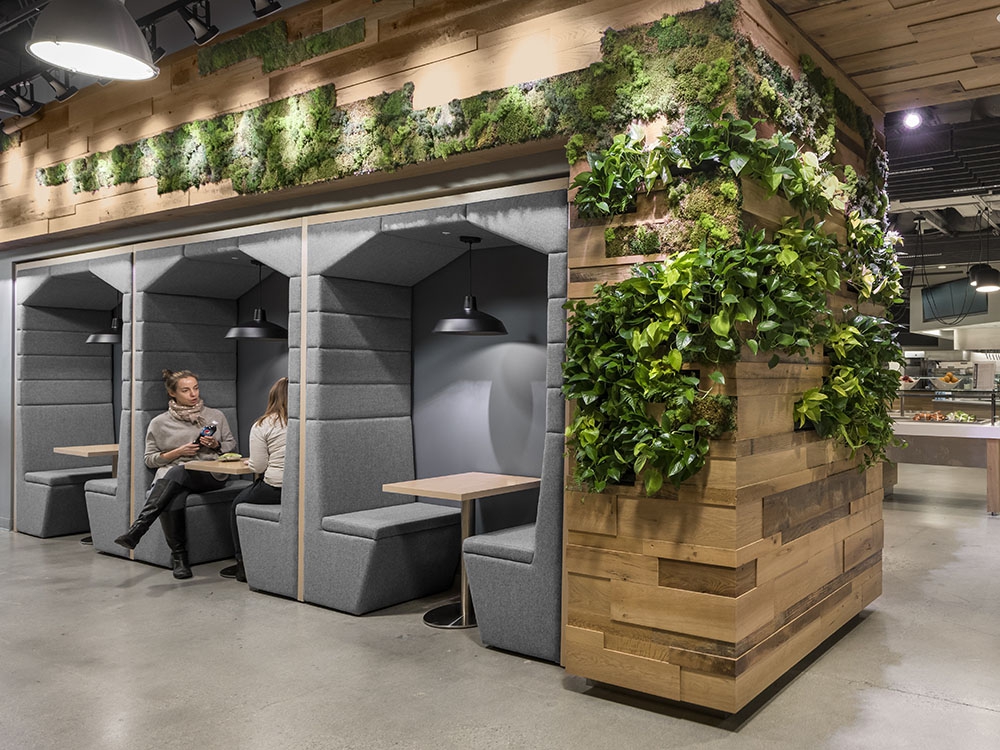
The most obvious benefits of natural design and biophilia in the workplace are the aesthetic advantages, offices that are filled with natural design elements can greatly enhance the look and feel of a space. . Creative new uses for living green walls including experimenting with plant colors, arrangements, and additional non-plant materials can add a branded element to spaces, providing many benefits from staging an interesting photo backdrop for the workforce or a powerful visual association between a brand and sustainable décor.
Studies show that our ability to directly access nature can alleviate feelings of stress. Stress is a known cause of both mental health disorders and cardiovascular diseases. Modern offices which feature biophilic designs often coincide with large, open workspaces, and one benefit of this is there’s more room for employees to stretch their legs and get around. Working in a building that encourages keeping people active can even help employees achieve exercise goals. This in turn helps to lower stress levels, and biophilic elements can make us feel in a more positive frame of mind, which allows us to take better care of ourselves.

Aside from the positive psychological impacts that drive the growing interest in biophilic design, there are other benefits to making plants a key part of office décor. When deployed sufficiently throughout an office space, plants can improve air quality and help with noise reduction. As living green wall technology progresses, systems that actively filter indoor air can act as a biofilter, optimizing their impact on air quality. Living green walls are also very effective insulators, helping to keep heat out during the summer and retain it during the winter. Additionally, plants absorb VOCs (volatile organic compounds) such as chemicals that are widely used in cleaning products, contained within some carpets and emitted from electronics.
The concept of biophilia has been around for several decades and the benefits of biophilic design from both a psychological and a practical, cost-saving perspective are robust. However, as mindfulness, workplace wellbeing and staff retention become increasingly important for many companies, incorporating biophilia in workspace design has become more and more important. With companies like Huckletree, designing an impressive imaginarium to inspire their workers, you can see the importance these designs play in attracting top talent.
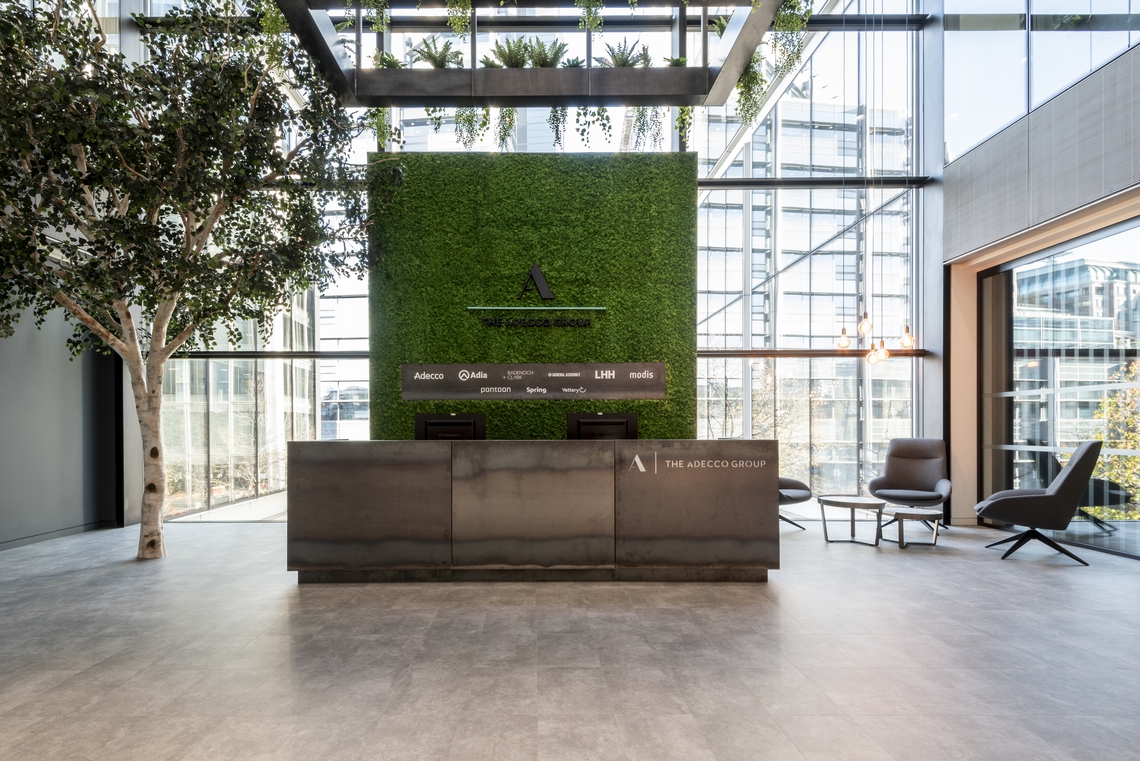
With great benefits coming from Biophilia designs in the workplace, businesses are looking to include an abundance of green areas where staff can work, collaborate or relax. Not everyone is able to create features like Amazon’s biophilia spheres, but there are some strategies that can be relatively easy to incorporate into any workplace.
Perhaps one of the simplest and most obvious solutions is simply adding potted plants to the workplace. These increase oxygen levels and subsequently improve concentration levels and decrease mental fatigue. Other simple solutions include adding more natural light, this could be as simple as using room dividers that allow light to pass through.

Plant-based installations such as living canvases and walls provide design opportunities that can transform even the dullest interior. Living walls and canvases are excellent because their large surface area makes them a strong feature, while their interactions with features such as windows and nearby furniture tie them into the overall habitat. These can be easily added to a modular office, with the possibility of using living walls to clad furniture pieces. For companies that are unable to incorporate traditional living green walls due to budgetary, lighting, or irrigation concerns, moss walls are growing in popularity because they have a similar visual appeal and do well in spaces with little-to-no natural light, and are easy to maintain, saving on costs.
Natural analogues can also be added, which are patterns and design styles that mimic nature. An example of this can be seen in our New York Global Design Centre, Gensler designed the Palisades grid to reflect the image of growing and expanding across the ceiling to incorporate a natural analogue into the modern design, in a similar style to how a tree grows up and blossoms above. These Palisades also benefited from the addition of planters and were intertwined with greenery to add to the natural feel. Incorporating natural design features like these can be a great way to produce interesting and creative design features that add value to the workspace.

Other design features such as nature-inspired art, imaginative use of capturing more natural light, bringing in more fresh air and even adding subtle sound effects and scents can bring the feeling of nature into the workspace. A key aspect of biophilic design is making it regularly accessible to the people in the space so its worth keeping in mind to focus on the inside, making use of open space. Given the many merits biophilic design offers, it’s well worth taking the time to consider which ones could benefit your people and how to use them to best effect in your next design

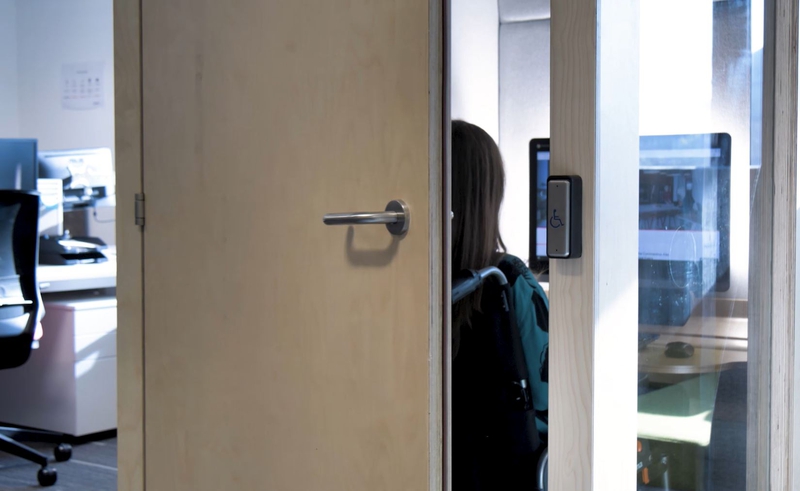



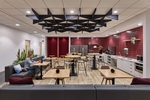
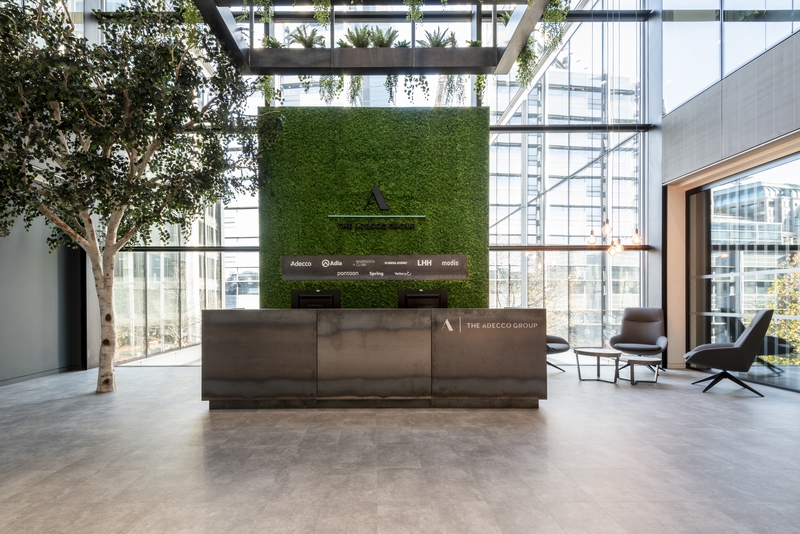
Situated in the heart of the vibrant Spitalfields Market, Adecco's London location is a statement of a their investment…
PROFESSIONAL SERVICES

A warm and welcoming design with a biophillic material palette drawing on plywood, planting and muted upholstery tones
GOVERNMENT & DEFENSE
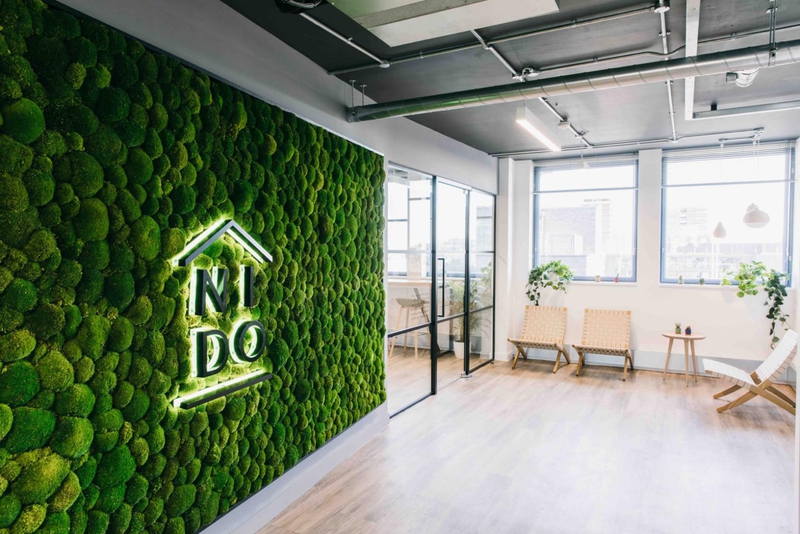
Student accommodation providers, Nido Student passionately care about being green and sustainable, so Knotel created th…
REAL ESTATE
